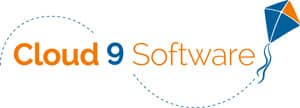Practice management software (PMS) is a crucial component to running a successful dental or orthodontic service organization (DSO/OSO). Although every DSO/OSO has different needs, there are some considerations that all chief technology officers (CTOs) must weigh before choosing the right PMS for their practices. Here are some tips to improve the selection process.
Architecture
All PMSs essentially serve the same purpose, which is to keep records, schedule patients, communicate with patients and referring professionals, manage billing, collections and finance, and more—all to ensure the daily workflow of the office runs as efficiently as possible. However, the difference between systems is how they are set up to handle all of these tasks.
According to Tim Brannigan, MBA, Senior Vice President, Information Systems, at the SALT Dental Collective in Bend, Oregon, an important place to start the search for a new PMS is to evaluate the DSO or OSO’s needs and choose the PMS that best fits those needs. It sounds simple, but it takes a careful assessment of how a product is architected.
Brannigan shares a recent experience his organization went through when they brought a new orthodontic practice group into their collective. As part of the normal process of analyzing what was needed to bring the new acquisition in line with standardized, enterprise state, they looked first at the existing PMS. They found that this system had technical limitations, specifically, a less than reliable network architecture.
Brannigan said that for their purposes, a cloud-based system was preferable because of a number of advantages over server-based systems. These include the expense of hardware, the expense and time commitment of supporting and maintaining servers, as well as ensuring their security. A PMS operating in a robust, cloud-based environment dramatically improves the overall uptime of the system and offers superior security and real-time updates.
“At the end of the day, fundamentally, all PMSs track the same elements and provide the same functionality,” he said. “Where the rubber hits the road is how the system is architected and which user experience flows the most logically for you.”
Reputation
The next step in the search for a PMS was researching different products, setting up demos, and speaking with industry peers.
“It’s hard to put a finger on what that vendor relationship is going to be like as you’re investigating potential vendor partners,” said Brannigan. “It’s a roll of the dice. Really talking with industry peers and other agencies that have deployed the product that you’re looking at makes an enormous difference.”
After a handful of demos, Brannigan and his colleagues ended up choosing Cloud 9 Software. He noted that some of the other products they tested didn’t feel quite ready for prime time or weren’t truly cloud-enabled.
“Cloud9 is the only true 100% cloud-based system,” said Brannigan. “There are other systems out there that claim to be; but, in reality, they use a server sitting on some other premises.”
Finding a true cloud-based product was one of the key differentiators that set Cloud 9 apart. The more Brannigan and the team dug into the features and functionality, the more they knew it was the right fit.
Integration
Being able to integrate with “bolt-on” or third-party products was another key differentiator. Brannigan recommends asking vendors which other products their system works with. This will help ensure that the system can pull from other products for various tasks that may be critical, from SMS-enabled text messaging with patients to software for business intelligence.
Flexibility
Another attractive feature of cloud-based technology is the fact that the PMS can be accessed from any device. Being a Web-based product, it works no matter what the user logs in from – cell phone, tablet, laptop or desktop.
“Some of our doctors travel quite a bit to cover different practices across the state,” said Brannigan. “The ability to securely log in from a laptop, home or sometimes a hotel without having to physically go into a practice creates newfound flexibility.”
Overall, every practice is going to have different needs. “You have to go through the paces to figure out which one is going to meet those needs,” Brannigan said. “For example, if it’s important for you to have a PMS in the cloud where you don’t have to deal with the hardware the upkeep, the maintenance, the security, etc., your options are dramatically narrowed at that point.”
Other questions to ask include does the PMS interface with your other vendor partners that you need for your bolt-on finance and communications tools, what is the relationship with the vendor partner like and how responsive are they? With these considerations in mind, it should make it easier to find the best solution for DSO/OSO CTOs to choose the PMS that will give them the most satisfying results.
Managing Your Dynamic Observation System
Sponsored by
Medqor is committed to protecting and respecting your privacy. We may contact you about our products and services or share information with sponsorship partners, as well as other content that may be of interest to you. By submitting your information, you consent to us contacting you for this purpose in accordance with our privacy policy.
For further information, please check out our privacy policy here









